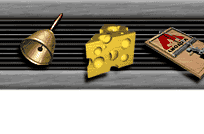Strategies for Strengthening
Behaviors
To complete
this assignment successfully, you should:
- Study
the assignment carefully
- Enter
your response(s) in the space(s) provided
- Fill in
your Name and Email address
- Send the
Assignment
- Tally
up
 's
for completion of this assignment. 's
for completion of this assignment.
Assignment:
Identify and explain six or more strategies for strengthening behaviors.
Reinforcement, by definition, is anything that strengths behaviors. There
are many strategies that increase target behaviors. When corporeal punishment
was first removed from schools, teachers found it challenging to regain
a sense of power in the classroom. Most of us were raised with a strong
influence from punishment. Punishment is actually a defensive position,
and weaker as well as less effective than reinforcers.
Ever get behind in a chess game or sports contest? Once a person becomes
anxious or feels like things are not going well, he or she tends to become
defensive. In contests, that's usually the beginning of the end. Is that
true in classrooms as well? When things are going well, are we more likely
to be positive, to reinforce the behaviors we like? And is the reverse
true? When things become raucous or students seem out of control, do we
reach for punitive or defensive behaviors?
Punishment does not increase the behaviors we want, and it does not teach
new, better responses. Punishment feels powerful when we are angry, but
each time we use punishment, we lose good will, lessen student motivation
and make it more difficult to establish a relationship with students.
Punishment takes away student initiative and desire to learn, too. It
is nearly always a losing strategy. In our frustration, and with the adrenalin
surge we get from striking out, we sometimes feel like it is more powerful
than reinforcements and rewards, but this isn't really the case.
This is an excellent time to increase the reinforcers in your teaching
repertoire. The Hyman text gives some great examples of reinforcement
strategies throughout Chapter Three.
Reinforcement
and Punishment
| |
Reinforcement -- increases behavior |
Punishment - decreases behavior |
| Positive + |
Add something to increase behavior |
Penalty or aversive stimulus added |
| Negative - |
Take something away to increase behavior |
Loss of valued object or privilege |
Extinction
-- stops behavior instantly
Personalizing
the concepts:
You may want
to talk with others about some of these ideas. It is easy to believe that
something you do will punish or reinforce a behavior and then find out
it does not. Here are two examples:
If I want
my dog to stop barking, I can command her to do so - and sometimes she
does stop, though not very often. I think she believes I am joining the
fray and adding my own vocalizations to hers. If I go pick up the barking
dog and hold her, she is likely to stop immediately. I can also get up,
leave the room and go to the refrigerator. The moment I do that, she follows
me, seems distracted, and barking stops.
In one school
the teacher told the first graders they had to complete their work to
go to recess. Those who did not complete the work were kept in. Each week,
the number of students staying in from recess grew and the number of first
graders staying on task decreased. The teacher believes she is giving
out positive reinforcement - since children who stay on task and complete
morning work get to go to recess. What is going wrong?

Want more
questions to chat about?  What is the difference between a punishment and a consequence?
What is the difference between a punishment and a consequence?  What is the difference between a privilege and a reward?
What is the difference between a privilege and a reward?  Do rewards and praise help or hurt students?
Do rewards and praise help or hurt students?  When does it make sense to keep students in or give them detention?
When does it make sense to keep students in or give them detention?
SUGGESTED STEPS
- Review
Chapter Three in Hyman.
- Define
the differences between punishment and reinforcement
- Write
at least six strategies for increasing behaviors.
RUBRIC for activities:
Give an accurate definition for reinforcement and punishment, and write
at least six strategies for increasing or reinforcing behavior.
|
















